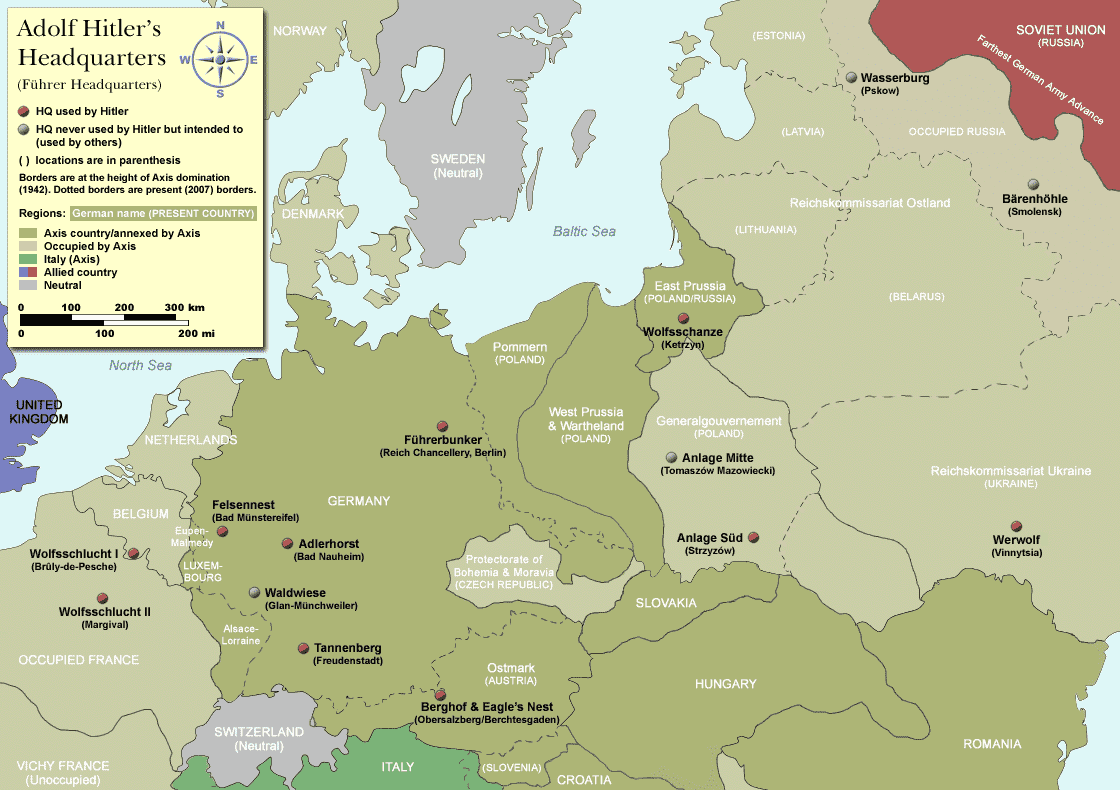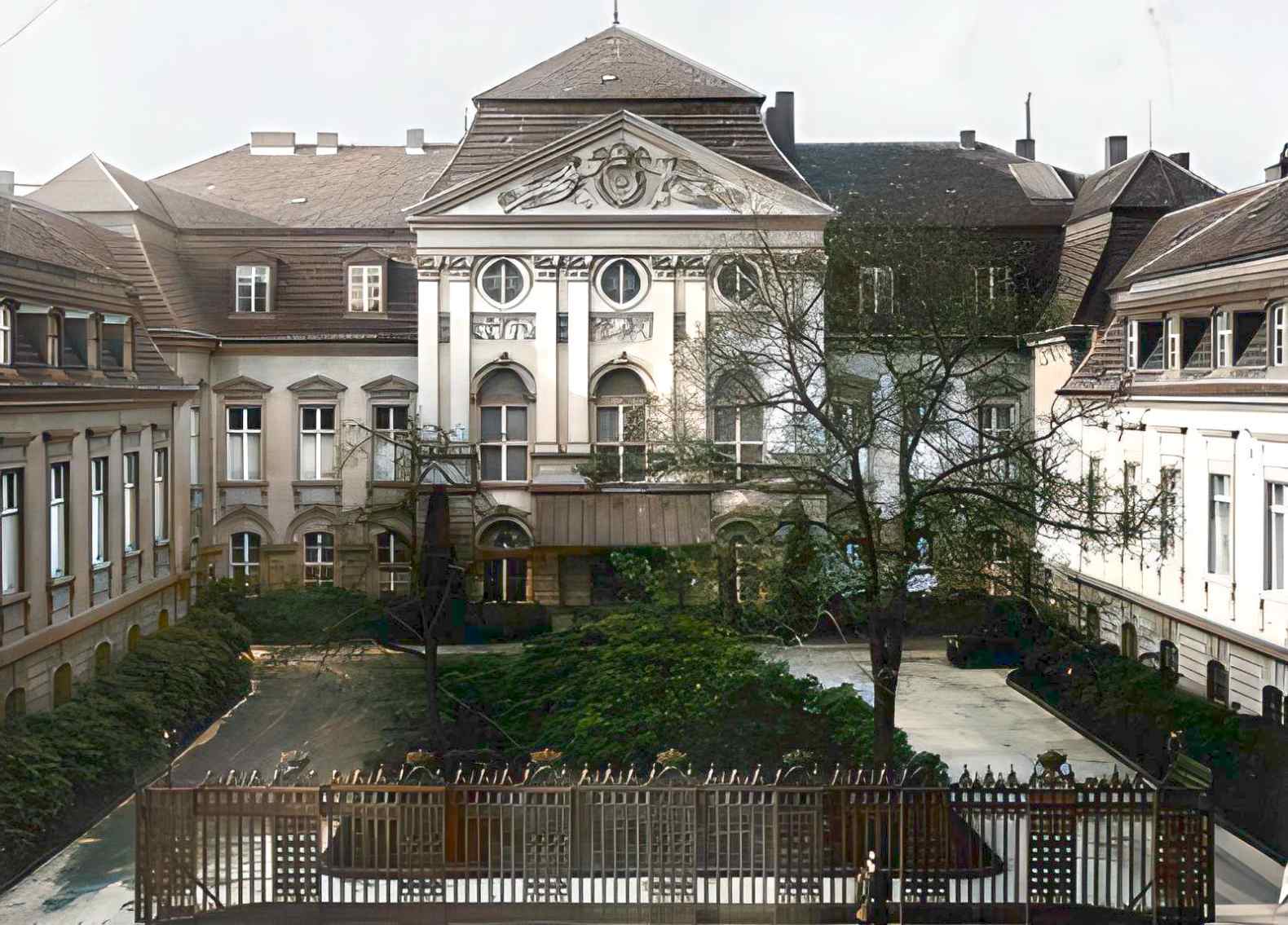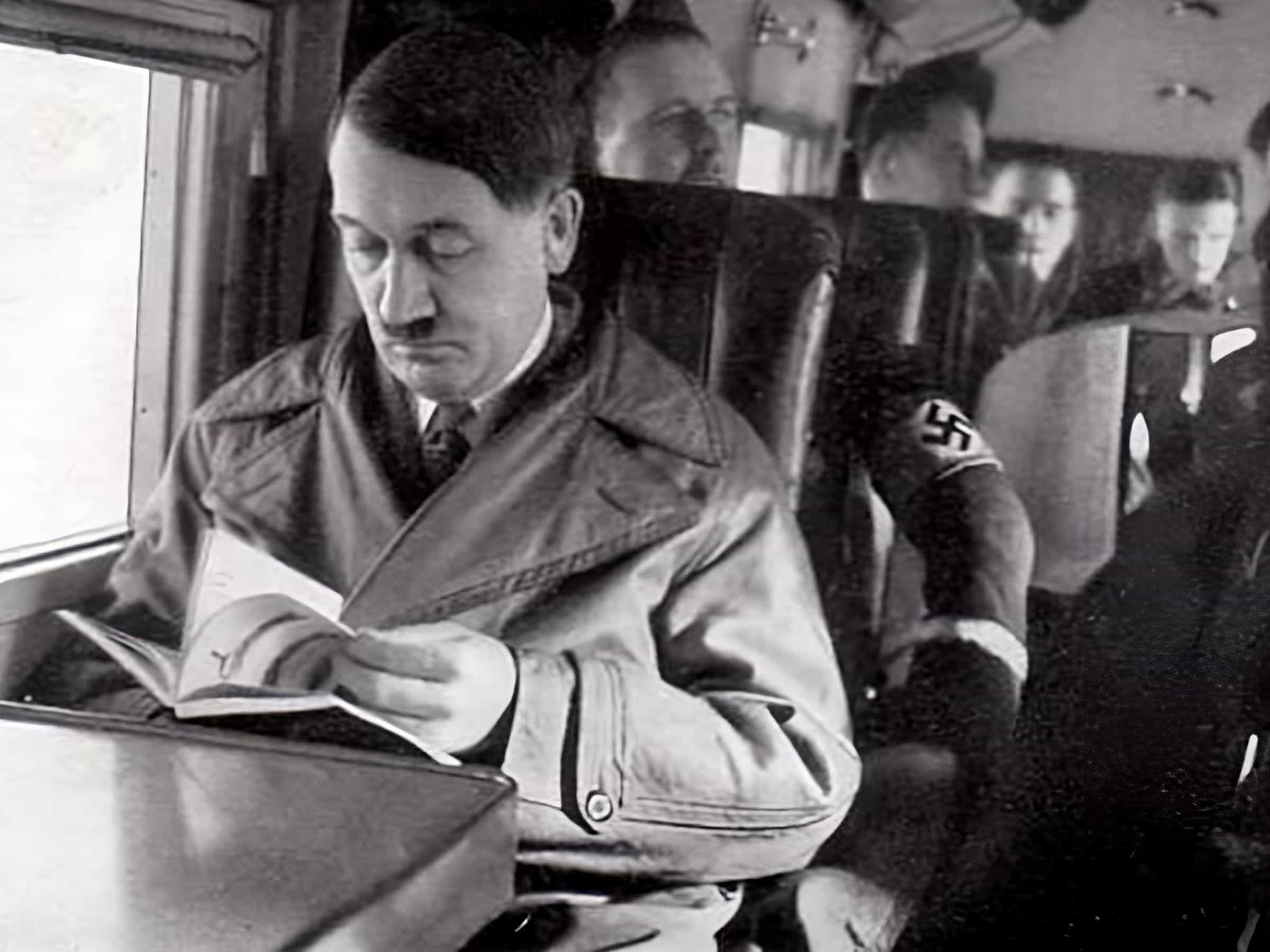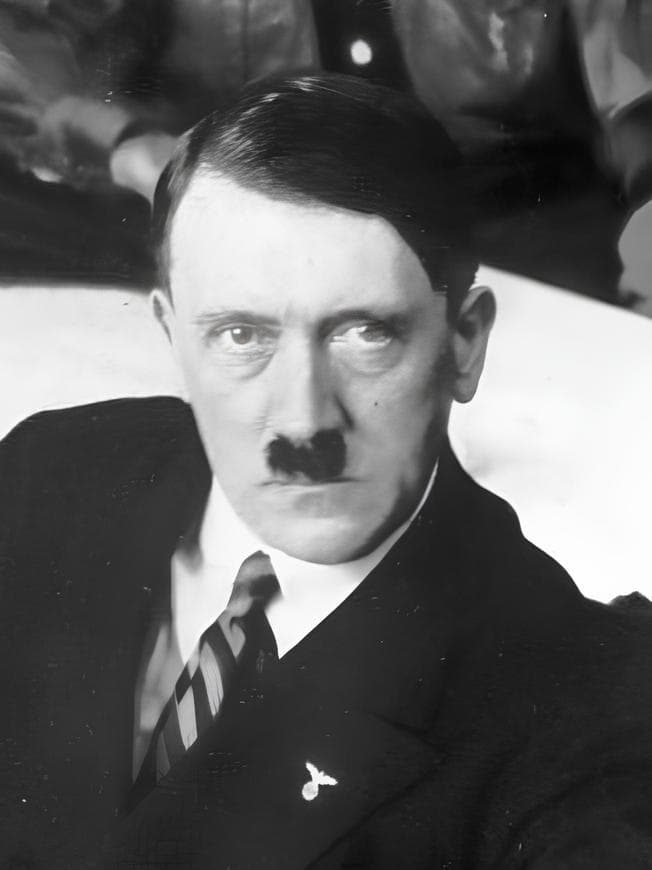Adolf Hitler was a multi-billionaire. As a Führer, he relied on magnificent buildings. According to the findings, Adolf Hitler’s net worth was measured in several billions of dollars. Hitler placed about 13 billion dollars (or 12 billion euros) of dirty money in several Swiss banks. To provide a clue for understanding how rich Adolf Hitler was, his salaries and other income had been tax-free since 1935. Hitler secreted away a lot of cash overseas to boost his overall net worth, and even before he seized power, Hitler had already bought several Mercedes-Benz limousines, and his net worth was already in the millions.
Hitler’s Net Worth Was Already in the Millions

Hitler was certainly a multi-millionaire in the early mid-1930s. According to the tax file, his annual income in the year he came to power was 1.2 million Reichsmarks.
But to the outside observer, Hitler seemed to be completely devoted to the greater good of the party, the people, and the fatherland. Yet, the “Führer” did have access to millions of dollars behind closed doors. Early in his rise to prominence, Hitler received hundreds of thousands of Reichsmarks (or several million dollars) from wealthy sponsors like industrialist Fritz Thyssen. Some people left plots of land to Hitler in their wills to be used as building sites for Nazi youth homes.
Due to his position as Reich Chancellor, Hitler was not required to pay income tax on his royalties from “Mein Kampf,” which sold around 13 million copies. At the end of 1943, Hitler had a credit balance of 5.5 million Reichsmarks alone (around $71 million in 2023), according to the last surviving document from the NSDAP publishing business Franz Eher Nachfolger GmbH (for comparison, 2.50 Reichsmarks were $1 in 1939–41).
Following the war’s conclusion, the Berchtesgaden Savings Bank revealed that Hitler still had about 92,000 Reichsmarks in his account after the currency reform in 1948. Beyond this, Hitler’s other assets were “not known,” as the Bavarian State Office for Property Administration reported in 1949.
Hitler’s 7 million Reichsmark fee for “Mein Kampf” was retained by the publishing company Franz Eher. Aside from Hitler’s house, “The Berghof,” on the Obersalzberg, which had cost nearly one billion Reichsmark, supported by tax money, Hitler owned numerous other very expensive estates. During the war, approximately 14 Führer headquarters were known to have been constructed.

Hitler also had a big house in Munich’s Prinzregentenstraße with a pricey art collection worth several million dollars. Most of the art in the collection was said to have been stolen from different places in Europe.
“But at least Hitler did not enrich himself.” This is one of the NSDAP’s most pervasive and enduring propaganda myths that still exists today. Hitler’s income and the sum of his net worth demonstrate that he was a very wealthy man, despite his public persona as a frugally austere man who served Germany’s interests above all else. The argument that Hitler resigned his Reich Chancellor salary in 1933 because he was already wealthy from the sales of “Mein Kampf” is widely used in support of this finding. And as of August 2, 1934, the anniversary of Paul von Hindenburg’s death, Hitler was once again paid his salary as Reich Chancellor and President of the Reich.
Hitler Transferred Billions of Dollars of Reichsmarks

As part of the New Reich Chancellery in Berlin, Hitler had a “studio” that was 4,200 square feet (390 sq. m.) in size. The total cost of building and equipping this Hitler’s room was around 5,000,000 Reichsmarks (about 60,000,000 euros or 65,000,000 dollars). Over 90 million Reichsmarks were spent on the building overall.
Adolf Hitler signed his final tax return in 1935, and the Munich tax authorities stopped auditing the “Führer and Reich Chancellor” for financial reasons. Some unusual rule allowed that to happen. Some historians believe that they have evidence that Hitler sent hundreds of millions of dollars overseas in the form of cash transfers.
Hitler transferred approximately 1.1 billion Reichsmark at the time, according to the same sources. This is comparable to around 5.85 billion USD or 4.85 billion British pounds in 2023. However, a multiplier of just one to five is likely much too low. One to ten looks more reasonable when taking into account income and buying power.
At least in theory, Hitler should have paid taxes on his annual income of 29,200 Reichsmarks while serving as Reich Chancellor. Since he stopped making payments to the government in 1935 and was exempt from making social security contributions, gross income equaled net income for him. As a point of comparison, the current German chancellor makes about 315,000 euros a year in gross income.
After the death of Reich President Paul von Hindenburg at the beginning of August 1934, Hitler also approved his salary as a supplement and tax-free. Hitler’s taxes owed in the amount of 405,500 Reichsmark were implicitly forgiven as a matter of honor, which was an immense fortune for the time, equivalent to at least 5.2 million USD in 2023.
The Source of Hitler’s Net Worth

Hitler’s official wage was a negligible portion of his overall net worth. Three main streams of income eventually became more plentiful for him. Annually in the 1920s, the NSDAP came close to bankruptcy due to a lack of funding, which was mostly met by contributions from the party’s loyalists. In particular, Adolf Hitler’s net worth was funded by Hugo and Elsa Bruckmann, a publishing couple based in Munich, and Helene Bechstein, the wife of Berlin’s most famous piano maker. The Bruckmanns made it their job to put Adolf Hitler in touch with influential businessmen.
Even though Hitler was a subtenant until 1929, he could already afford the luxuries of a personal secretary, chauffeur, and several huge Mercedes automobiles. Not until 1930 did revenues from his book “Mein Kampf” greatly bolster his financial situation. The total number of copies sold barely surpassed 20,000 in 1931, but then skyrocketed to 287,000 by January 1933, 1,181,000 by the end of 1933, and 12,451,000 in German alone by the end of 1944. Royalties of up to 20% of the selling price were paid to Hitler for each of these copies. There were also 5.2 million copies sold in eleven languages by 1939.
Hitler Made Money From Royalties and Donations

However, this still wasn’t enough for Hitler to amass a six- or even a seven-figure net worth. Hitler’s huge net worth was made possible in part by “donations,” but more importantly by an amazing scam. Starting in 1933, Hitler demanded and got royalties from the Reichspost (“Imperial Mail”) for the use of his “right to his own picture” on postage stamps.
Because Hitler’s image appeared on so many German stamps, everyone who mailed a postcard or letter in the country effectively subsidized his regime. Joseph Goebbels, the Minister of Propaganda and a distinctly extravagant official, remarked in his journal that Hitler earned “a lot of money” under this scheme. Over the years, this plan has amassed a sum in the tens of millions of dollars for Hitler, if not hundreds of millions.
Private donations (both in cash, and jewelry due to economic crisis) had been supplanted by the “Adolf Hitler Fund of German Trade and Industry,” a multi-million-dollar yearly charge on large firms that began in 1933. Companies on the larger scale set aside %0.5 of their income in the hopes of receiving arms orders. 12 years later, the fund had amassed 700,000,000 Reichsmarks ($3.73 billion). Using these funds, Hitler was able to get all he wanted in Obersalzberg.
It is impossible to put a precise number on the funds handled by the NSDAP party chancellery and, subsequently, by Martin Bormann. Even the US entrepreneur Henry Ford was one of the donors. The money was intended for the party, but Hitler never made a distinction between the party treasury and his own wallet.
But for Hitler, if you have to pay taxes on the money you make, the enjoyment is halved. Before he came to power, Hitler had a long history of disputes with the tax authorities. By 1933, his tax bill had ballooned to a whopping 405,494 Reichsmark ($5.2 million), or eight times his official pay as Reich Chancellor of 29,200 Reichsmark plus an allowance of 18,000 Reichsmark for expenses. But Hitler just had the criminal tax proceedings against him put on hold and didn’t pay income tax on his own income or the gifts he gave to good civil workers and generals to bind people to himself.
What Did Hitler Do With All of His Net Worth?
So, what did Hitler do with all of his net worth? Millions were spent on constructing mansions on the Obersalzberg and in Poznan, as well as on gifts and the promotion of “German art.” The expansion of the “Berghof,” including bunker facilities, barracks, and a branch of the Reich Chancellery, has devoured a total of around one billion Reichsmarks ($5.32 billion as of today). Hitler shamelessly dipped into various financial resources, including public funds, to supplement his own net worth.

Even more so because there was no oversight of the integration of public and private funding. Hitler, like other prominent Nazi officials, used tax money for his own gain to fund his megalomaniac construction projects. Piecemeal construction of the New Reich Chancellery (the Chancellor’s Office) and its outrageously overpriced furnishings ate up more than 100 million Reichsmarks, or around 1.3 billion dollars or 1.2 billion euros in today’s currency.
Hitler Spent Billions on His Houses, and Bunkers Alone
The construction of new barracks, utility facilities, and the “Berchtesgaden Chancellery Branch Office,” an alternative headquarters for Hitler’s staff, at the Berghof mountain retreat, was very costly. The structure itself was transformed from a simple vacation home to a grandiose structure. The house’s centerpiece was a massive living room with a retractable panoramic window. The one billion Reichsmarks ($5.32 billion as of today) were spent on building Hitler’s bunkers at Obersalzberg, as well as the “Kehlsteinhaus,” a teahouse on the top of the Kehlstein, accessible by its own road, tunnel, and 407-foot (124-meter) high elevator. Much of the cost was covered by the state’s general fund.
What Happened to Hitler’s Net Worth?
Around 10 million Reichsmarks from Hitler’s inheritance alone shrank to around 600,000 Deutschmarks (around $25 million) in 1948 with the currency reform, which went to the state of Bavaria. Hitler gave away his property in a private will that he wrote in his Führerbunker just before the end of the war.
It is unknown why Hitler might have sent billions of dollars of Reichsmarks overseas. Because by the mid-1930s, it was already obvious that he would only die a tyrant and never be able to live a normal life, even in exile. However, Hitler’s IQ was not the highest when it came to foreseeing things like that. Exactly what happened to the astronomical quantities of money and net worth owned by Adolf Hitler after 1945 is only one of many mysteries that remain unsolved.

In 1948, there was not much of the dictator’s wealth left in the Free State of Bavaria. In April of 1945, his Obersalzberg home, the Berghof, was bombed by the British. The Americans took his art collection, returned much of it to its original owners, and then turned the remainder over to the federal government. The GIs sent the library back to the states. The Washington Library of Congress now houses a third of the total volumes.
In the post-war years, more and more of Hitler’s belongings were discovered in the possession of his entourage, bodyguards, and American soldiers who had taken items from his apartment on Prinzregentenplatz. A walnut showcase belonging to Hitler was found in the home of Gertrude M., who claimed to have received it as a gift from an American soldier and was allowed to keep it for 400 marks.
Bavaria wanted to stop the trade of Hitler memorabilia, so in 1953 it sued a businessman in Basel for smuggling into Switzerland a Persian carpet bought from Hitler’s father-in-law Friedrich Braun for $12,000 ($133,000 in 2023) and said to be Hitler’s. The case was not successful.
Hitler’s papers, including his soldier’s book, gun license, and Austrian passport, are kept in a safe in the Bavarian Main State Archives in Munich. The papers were seized by the Munich General Prosecutor’s Office during a raid on Hitler’s housekeeper, Anny Winter, who claimed it was part of Hitler’s will, and the suitcase full of Hitler’s items were returned to her after a court case. A piano given to Hitler as a gift for his 50th birthday in 1939 was also saved from auction by Bavaria.
Nobody in human history has written as much as Adolf Hitler has. Since 1945, there have been more than 70 standalone biographies of Hitler published (not including brief portraits, translations, or extreme right-wing tribute works).






